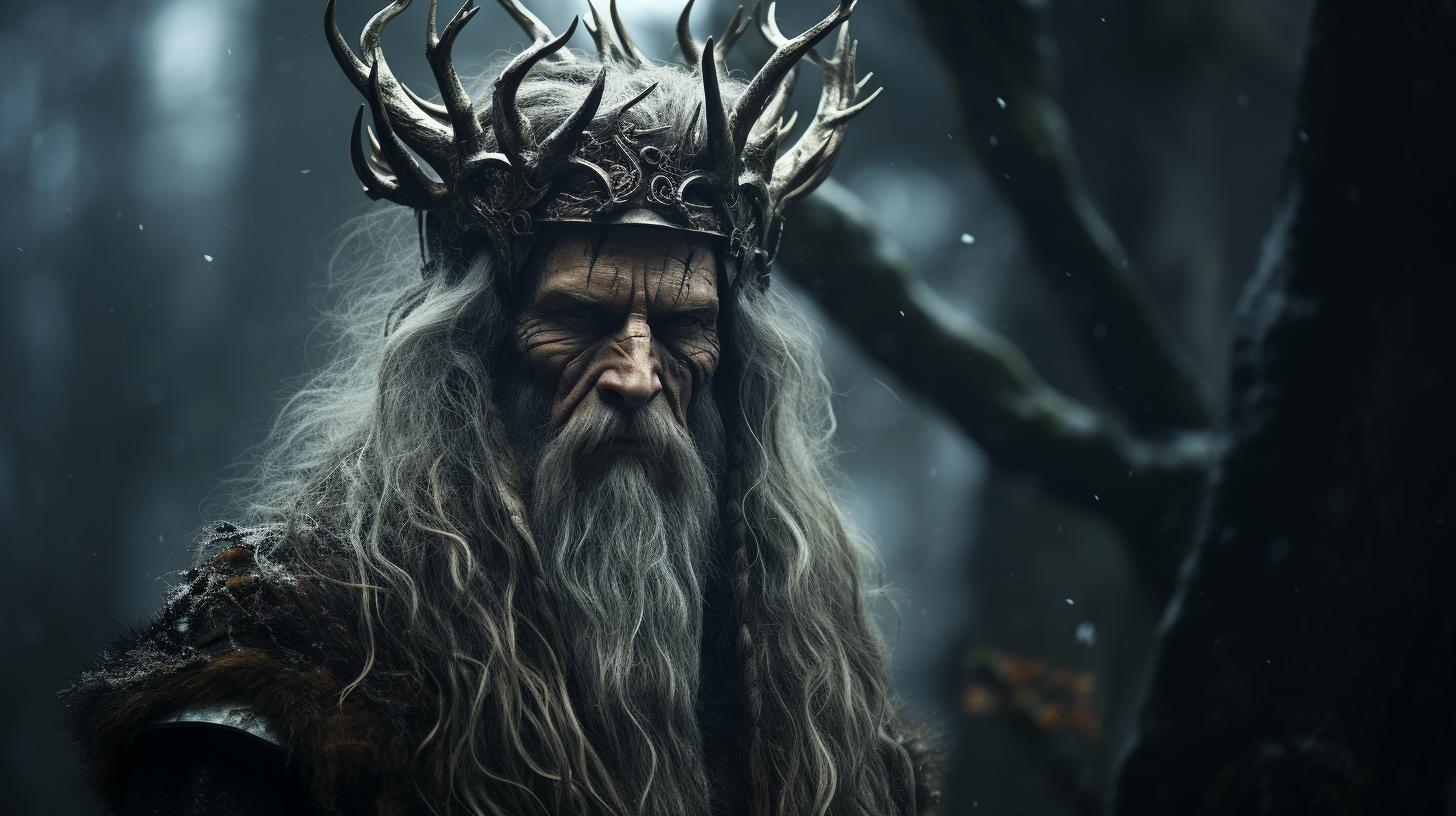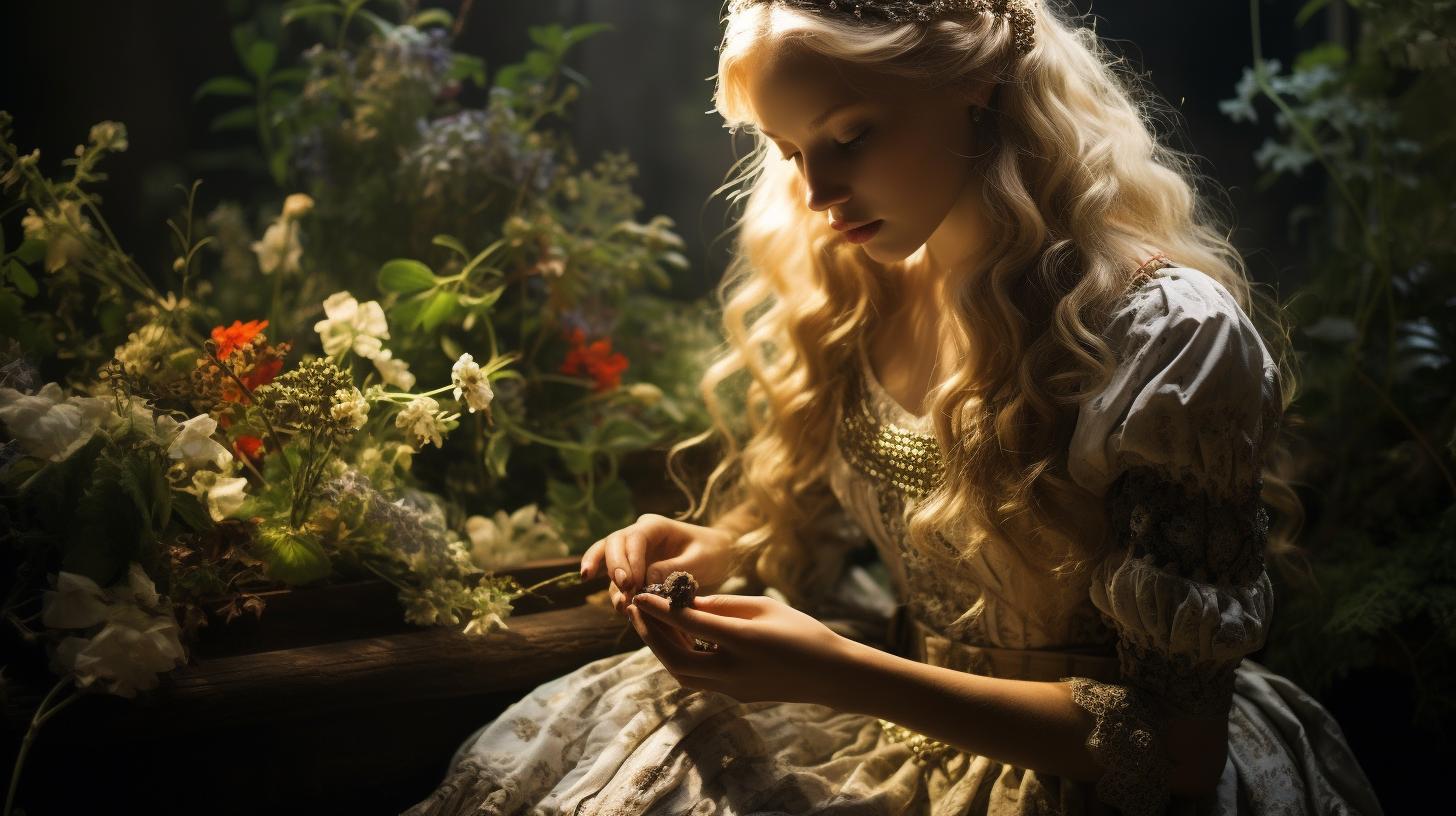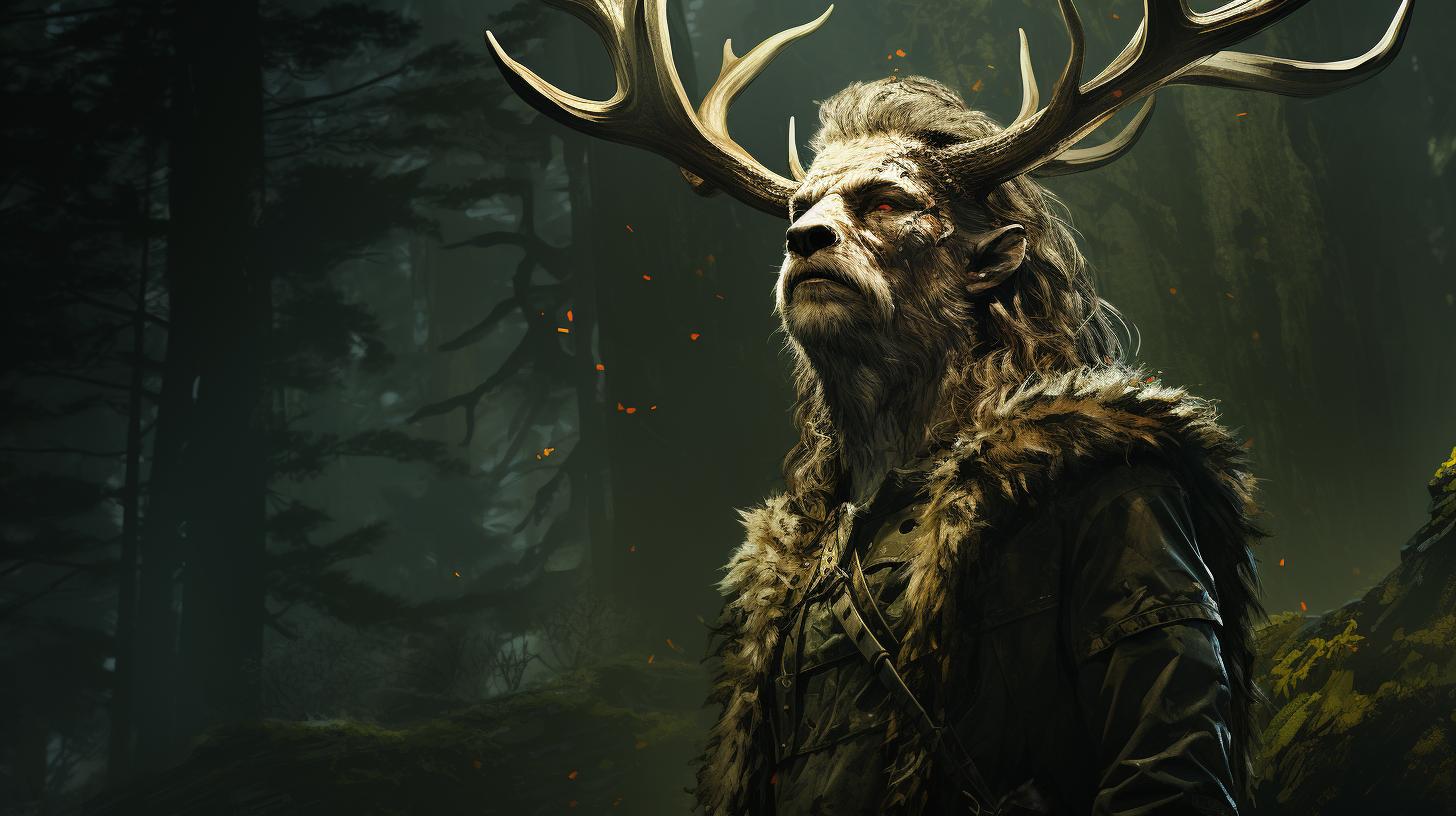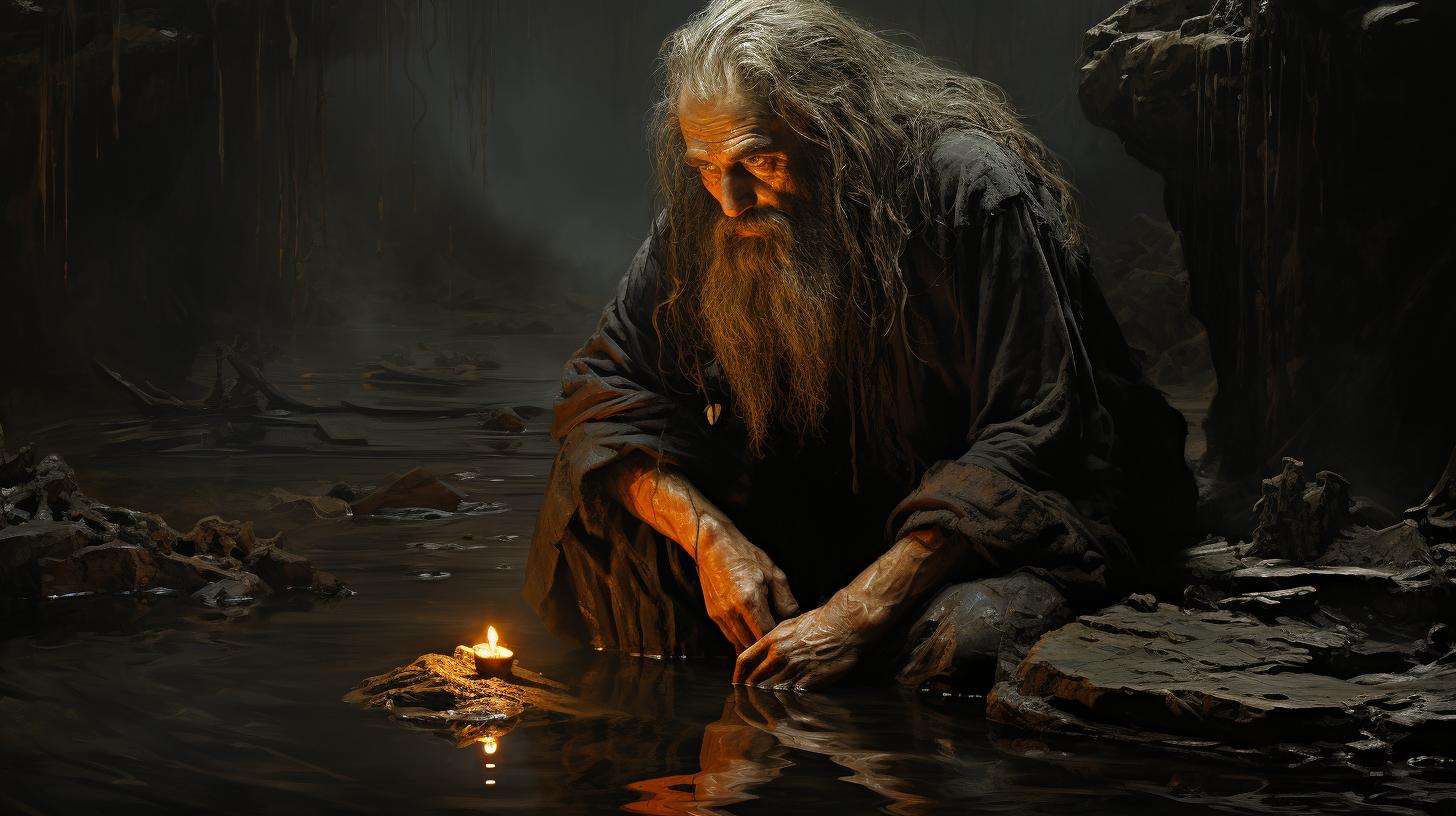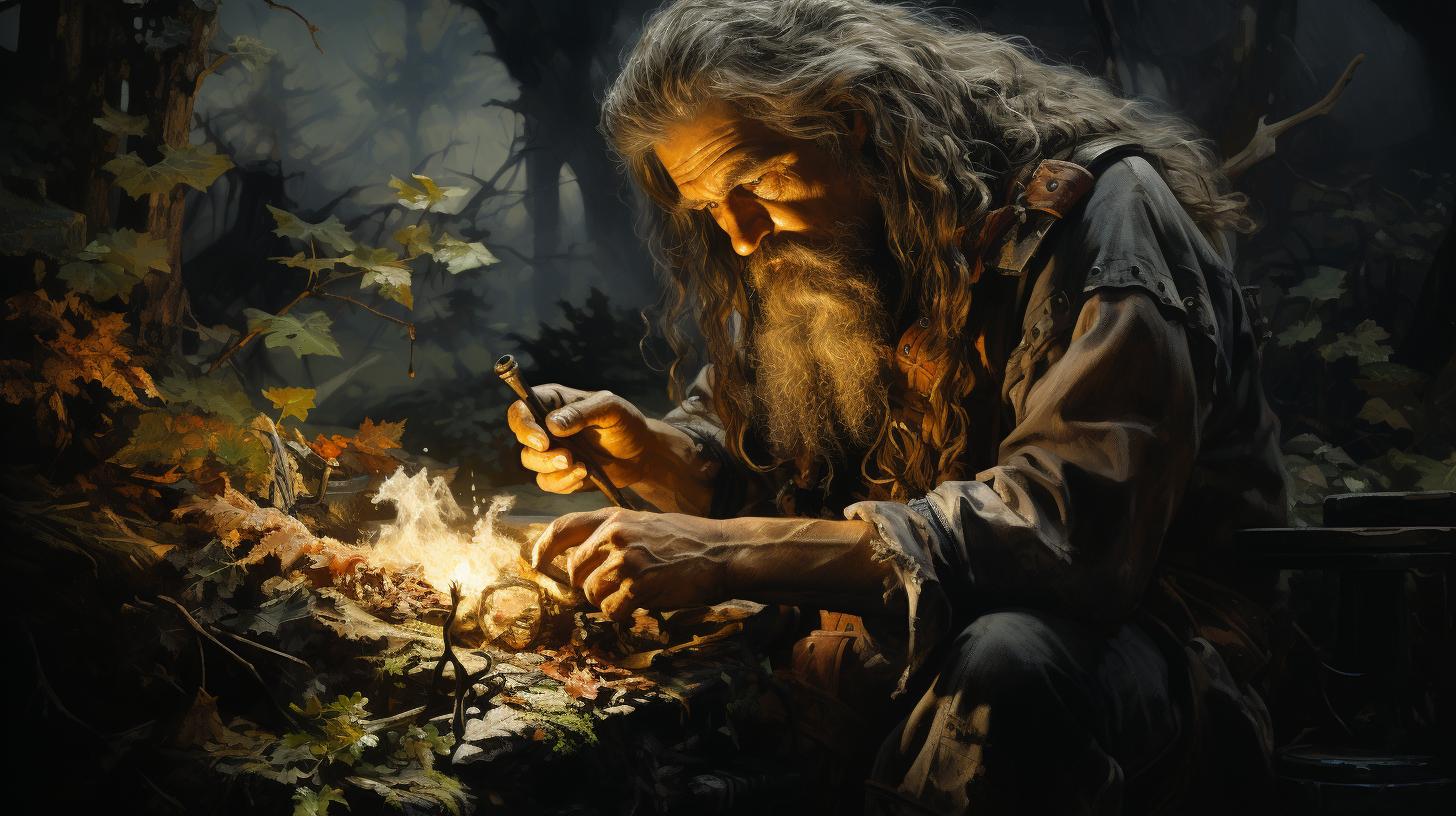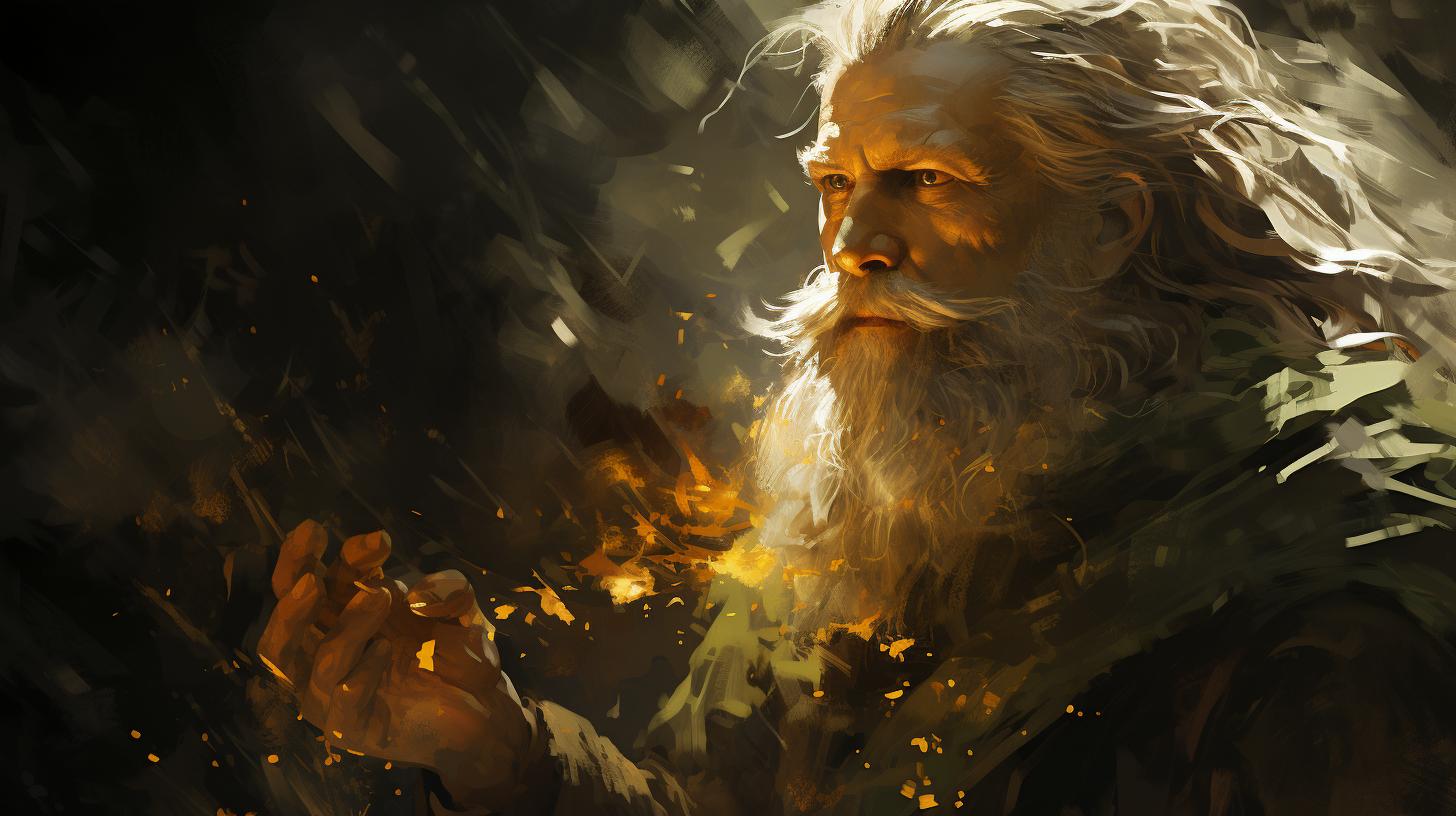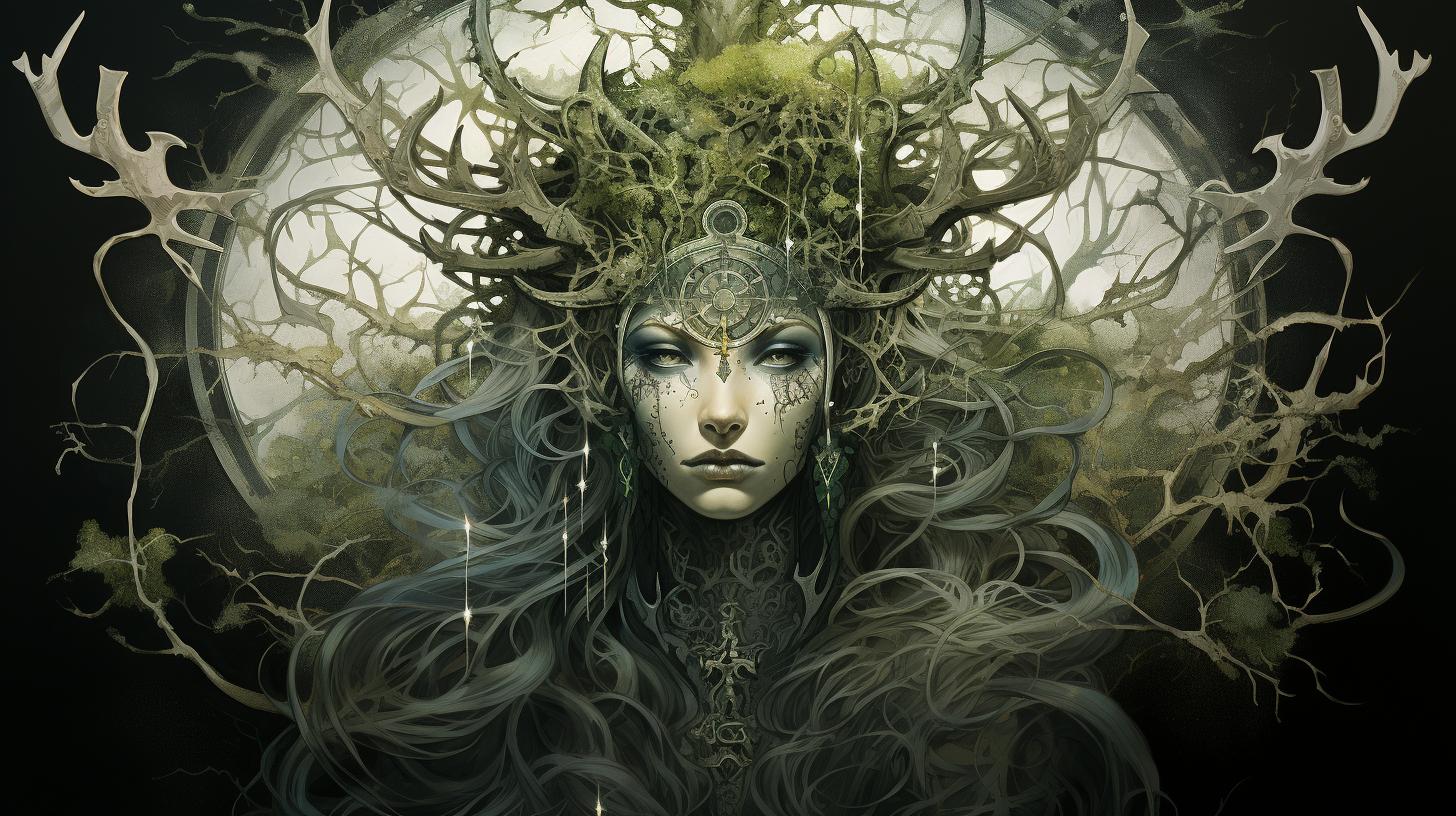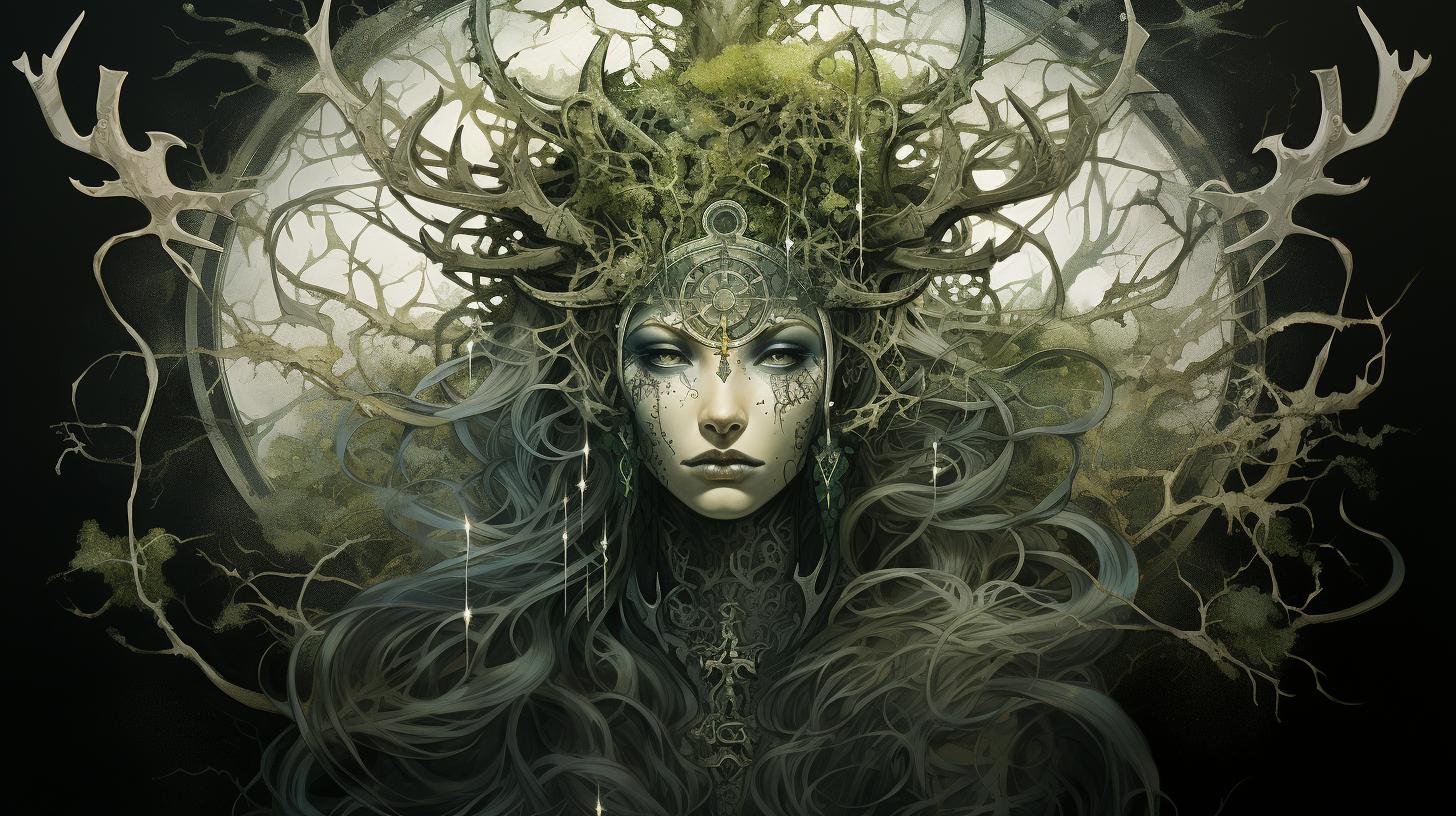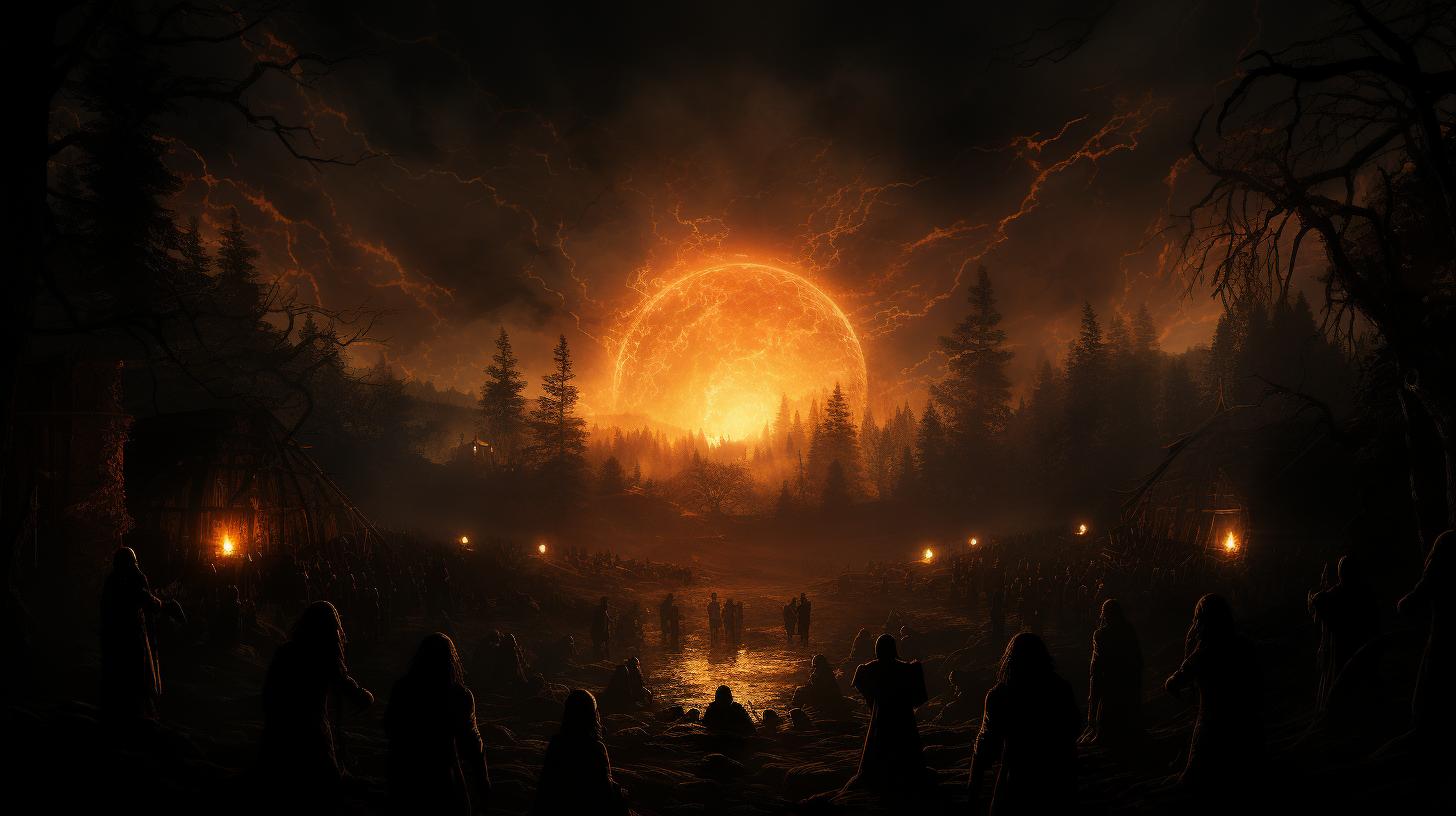The Rich Mythology of Tuoni and the Finnish Underworld
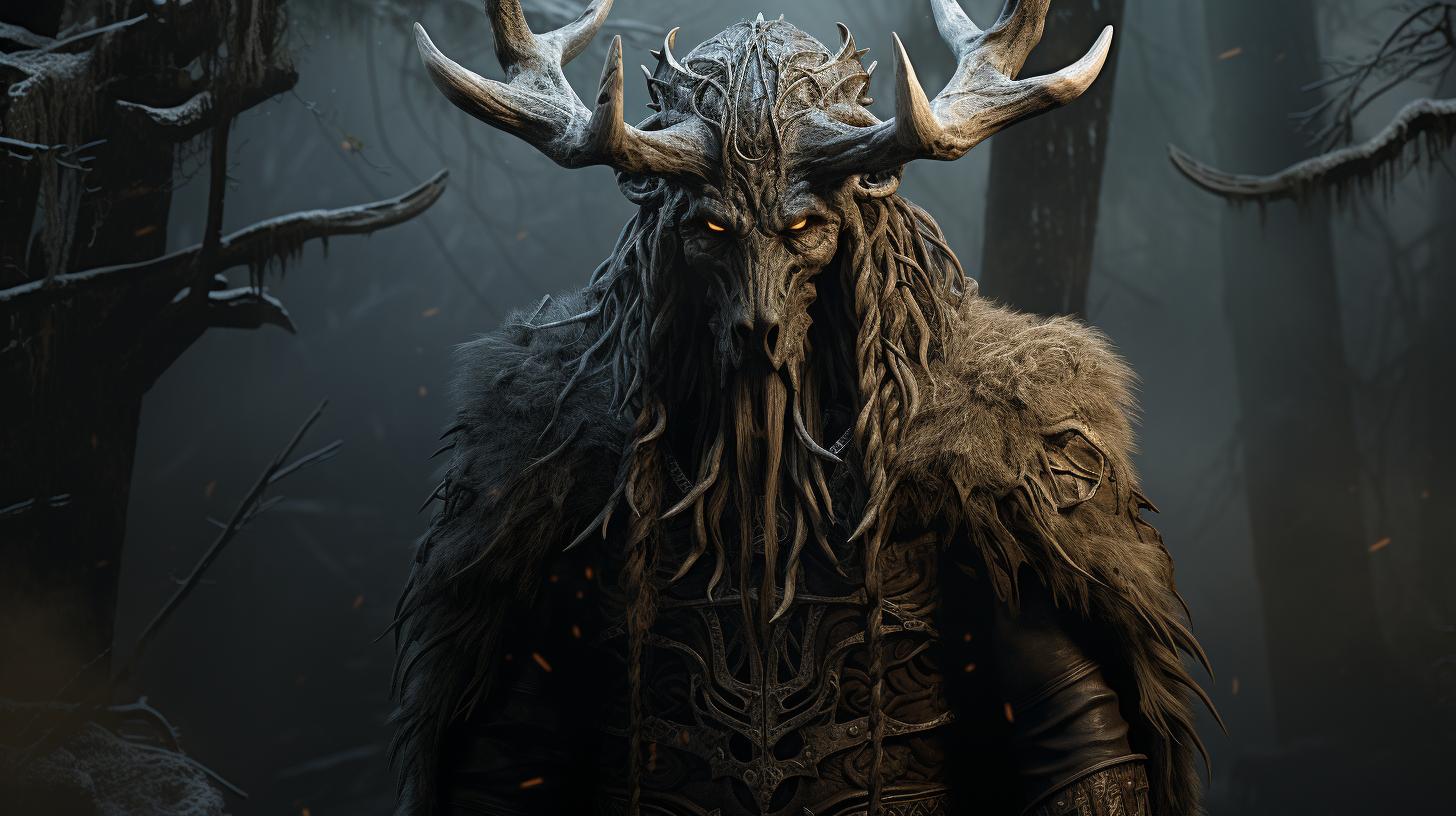
Tuoni, the Finnish god of death and the underworld, holds a significant role in Finnish mythology. Known as the ruler of Tuonela, the realm of the dead, Tuoni is portrayed as a stern figure with a gray beard emerging from the dark earth.
Alongside his wife, Tuonetar, he governs over the deceased, carrying out the task of guiding them to Tuonela. This article explores the mythology and folklore surrounding Tuoni, as well as other deities and entities associated with the Finnish underworld, including the finnish god of war, underworld gods, and mythical figures like Kipu Tyttö and Loviatar.
Dive into the rich tapestry of Finnish mythological heritage and discover the fascinating realm of Tuoni and the stories of The Kalevala.
The Pantheon of Finnish Gods
Tuoni, known as the Finnish god of the underworld and death, holds a significant role in Finnish mythology. As the ruler of Tuonela, the realm of the dead, Tuoni is described as a stern figure with a gray beard emerging from the dark depths of the underworld.
His responsibility lies in guiding the deceased to their eternal resting place in Tuonela. Alongside his wife, Tuonetar, Tuoni maintains order and balance in the realm of the dead, assisted by other deities such as the Finnish god of war and various underworld gods.
Their collective tales and roles enrich the Finnish mythology, providing a deep understanding of the ancient Finns’ view of life, death, and the afterlife.
Though Tuoni’s appearances in Finnish mythology are often sparse in detail, the reverence and fear associated with his name highlight his significance.
His portrayal as a strict and austere figure represents the Finnish beliefs surrounding death and the afterlife. The exploration into the myths and legends of Tuoni, including the Tuoni view history, sheds light on Finnish folklore and the cultural significance of death and the afterlife.
While the exact nature of Tuoni’s domain remains mysterious, it is clear that his power extends over all aspects of the underworld, ensuring the transition of souls from the world of the living to the world of the dead.
Exploring the myths and legends surrounding Tuoni and other Finnish gods such as the finnish mythology god of death, sheds light on Finnish folklore and the cultural significance of death and the afterlife.
While Tuoni himself is a captivating figure, understanding his role in conjunction with other figures like Kipu Tyttö, the spirit of pain, and Loviatar, the mother of diseases, provides insights into Finnish beliefs and traditions related to mortality.
Thus, Tuoni and his counterparts stand as central figures in Finnish mythology, embodying the significance of the afterlife for the Finnish people.
Tuonela: The Realm of the Dead
The realm of Tuonela in Finnish mythology is a captivating and mysterious place that holds significant importance in the belief system. It is considered the land of the dead, where Tuoni, the Finnish god of the underworld and death, reigns supreme alongside his wife, Tuonetar. Let’s explore the mythological aspects of Tuonela and the mythical creatures associated with this realm.
Exploring Tuonela in Finnish Mythology
Tuonela is described as a dark and foreboding underworld, ruled by Tuoni himself. It is believed to be located beneath the Earth’s surface, and the entrance to this realm is guarded by the Daughter of Death, Kipu Tyttö.
In Finnish mythology, Tuonela is the final destination for souls after death, where they embark on their eternal journey guided by Tuoni. The journey to Tuonela is filled with trials and tests that determine the fate of the deceased, highlighting the underworld and its significance in the cycle of life and death.
Mythical Creatures in Tuonela
- The Swan of Tuonela: A prominent figure in Finnish mythology, the Swan of Tuonela is a mystical bird that resides on the dark waters of Tuonela. It possesses a magical singing voice and is tasked with guarding a mystical isle, embodying both beauty and sorrow.
- The Ferryman: To traverse the treacherous waters of Tuonela, souls often rely on the Ferryman, a mythical figure who ferries the departed across the river of death.
This enigmatic character plays a crucial role in facilitating the journey of souls to the other side.
- Otherworldly Creatures: Within Tuonela, various other mythical beings and creatures abound. These include eerie spirits, enchanted animals, and creatures from Finnish folklore that inhabit the darkness of the underworld.
As we delve deeper into the realm of Tuonela and its mythological intricacies, a rich tapestry of tales and legends emerge, shedding light on the significance of this otherworldly realm in Finnish folklore and cultural heritage.
Tuonetar: Wife of Tuoni and Guardian of the Dead
Tuonetar, the wife of Tuoni, plays a significant role in Finnish mythology as the guardian of the dead. As the ruler of Tuonela, Tuoni relies on Tuonetar to assist in guiding and protecting the souls that enter the realm of the dead.
Little is known about Tuonetar’s appearance or attributes, but her presence is essential in the journey of the deceased. She ensures that the souls are guided safely through the darkness of Tuonela, helping them transition to the afterlife.
While Tuoni represents severity and darkness, Tuonetar holds the responsibility of compassion and guidance towards the departed souls. Together, they form a harmonious partnership in overseeing the realm of the dead, embodying the underworld and its mysteries.
Through her role as wife to Tuoni, Tuonetar symbolizes the balance between life and death, offering a glimpse into the intricate mythology of Finnish folklore surrounding the concept of the afterlife.
Loviatar: The Goddess of Pain and Diseases
Loviatar, an intriguing deity in Finnish mythology, holds dominion over pain and diseases. She embodies the struggles and afflictions that mortals endure throughout their lives. As the daughter of Tuoni, the god of the underworld, Loviatar resides in Tuonela, the realm of the dead, alongside her father and sisters.
Loviatar’s presence is closely intertwined with human suffering, as she inflicts illnesses and physical torment upon individuals. She is often associated with maternal pain during childbirth, as well as various ailments and diseases that plague humanity.
Understanding Loviatar’s influence sheds light on the complex relationship between mortals and the divine in Finnish mythology.
Exploring Loviatar’s mythology and significance provides valuable insights into the Finnish pantheon and the role of deities in shaping cultural beliefs and narratives surrounding pain and diseases.
Kalma: The Goddess of Death and Burial
Kalma, the goddess of death and burial, plays a significant role in Finnish mythology and the realm of Tuonela.
As the keeper of the graves, Kalma collaborates with Tuoni in governing the cemeteries and ensuring the peaceful rest of the deceased souls. She represents the final journey of the departed, overseeing their transition from the realm of the living to the realm of the dead.
In Finnish folklore, Kalma is often depicted as a solemn figure, dressed in dark ceremonial clothing, embodying the somberness associated with death and the afterlife. Her presence serves as a reminder of the inevitable fate that awaits all living beings.
Through rituals and burial customs, the ancient Finns paid homage to Kalma, seeking her favor and guidance in navigating the realms beyond death. They believed that proper burial rites ensured a smooth passage into the afterlife, emphasizing the importance of Kalma’s role in the spiritual journey of the departed souls.
While not as prominently depicted as Tuoni or Tuonetar, Kalma remains a crucial figure within Finnish mythology, representing the intrinsic connection between life and death, and the reverence bestowed upon the goddess who oversees the final resting place of the deceased.
The Swan of Tuonela: Myth and Symbolism
The Swan of Tuonela is a captivating mythological creature deeply rooted in Finnish folklore. This majestic bird resides on the River Tuoni, flowing through the realm of the dead. The Swan of Tuonela is said to possess unique powers, able to foresee the arrival of souls journeying towards Tuonela.
In Finnish mythology, the swan represents grace, purity, and spiritual guidance. It serves as a symbol of transition and transformation, guiding the souls of the deceased from the earthly realm to the afterlife.
The swan’s ethereal presence and haunting beauty evoke a sense of mystery and reverence among the Finns.
The symbolism of the Swan of Tuonela extends beyond its role as a guide.
It represents the delicate balance between life and death, emphasizing the finite nature of existence and the eternal cycle of renewal. Its mournful song echoes through the depths of Tuonela, capturing the essence of farewell and the transcendence of the human spirit.
Throughout Finnish folklore, the Swan of Tuonela is celebrated in various art forms, including music, poetry, and visual arts. Its enchanting presence continues to inspire and fascinate both artists and enthusiasts, perpetuating the rich mythology of Tuoni, the Finnish god of the underworld.
Päivätär and Kuutar: Goddesses of Day and Moon
Päivätär and Kuutar are revered goddesses in Finnish mythology, representing the powerful forces of day and the moon respectively. Päivätär, also known as the Day Mother, presides over the light and warmth of the sun, bringing life and energy to the world.
She is associated with growth, vitality, and the nourishment of all living creatures.
Kuutar, on the other hand, is the ethereal goddess of the moon. She governs the mystical and enchanting aspects of the night, embodying its inherent beauty and mystery.
Kuutar is often associated with dreams, intuition, and the ebb and flow of emotions.
These goddesses play essential roles in the cosmic balance of light and darkness, symbolizing the cyclical nature of time and the interconnectedness of all things.
While Päivätär brings forth the brilliance of the day, Kuutar casts her celestial glow upon the world during the night, weaving together a tapestry of harmony and equilibrium.
Although not much detailed information is available about Päivätär and Kuutar, their presence in Finnish mythology highlights the reverence bestowed upon celestial bodies and the significance of natural phenomena in ancient beliefs.
Their enduring symbolism continues to inspire awe and appreciation for the celestial wonders above.
Other Deities and Entities in Finnish Mythology
In addition to Tuoni and Tuonetar, Finnish mythology is rich with various other deities and entities associated with the underworld. These beings play unique roles and contribute to the intricate tapestry of Finnish folklore.
The Role of Surma in the Underworld
Surma, a prominent figure in Finnish mythology, serves as a collector of souls in the realm of the dead. With reins in hand, Surma undertakes the task of guiding the departed to their resting place in Tuonela.
As a vital member of the underworld hierarchy, Surma ensures that the souls are safely transported and find their eternal abode.
Liekkiö: The Spirit of a Murdered Child
Liekkiö, a poignant character in Finnish folklore, represents the spirit of a child who met a tragic end. This spectral presence embodies the pain and sorrow associated with untimely death.
Encountering Liekkiö is believed to evoke profound emotions and serve as a reminder of life’s fragility, emphasizing the importance of cherishing every moment.
These entities, such as Surma and Liekkiö, offer intriguing insights into the Finnish concept of the afterlife and the complexity of their mythological traditions.
Exploring these figures allows for a deeper understanding of the diverse range of beings present in Finnish mythology.
Exploring Finnish Folklore and Mythical Creatures
Delve into the rich realm of Finnish folklore and discover a fascinating world of mythical creatures and enchanting tales. Finnish mythology is replete with intriguing beings that inhabit the realm of Tuoni and beyond.
From the mischievous spirits to powerful deities, here are some highlights:
Vipunen: The Ancient Earth Giant
Vipunen, an ancient earth giant, is said to possess immense knowledge and wisdom. Uncovering the secrets held by this mighty creature requires wit and determination.
Menninkäiset: The Troll-like Creatures
Step into the mysterious world of Menninkäiset, troll-like creatures known for their magical abilities. These mischievous beings are often found dwelling in caves and forests, ready to play pranks on unsuspecting travelers.
Näkki: The Water Spirit
Meet Näkki, the enigmatic water spirit that resides in rivers and lakes. Often depicted as a shapeshifting creature, Näkki is known to lure unsuspecting individuals into the depths with its captivating songs.
Hiisi: The Protective Nature Spirits
Discover the protective nature spirits, known as Hiisi, who guard sacred groves and natural landmarks. These supernatural beings hold great reverence in Finnish folklore, ensuring the harmony between humans and nature.
Metsänväki: The Creatures of the Forest
Uncover the vibrant world of Metsänväki, the creatures of the forest. From the wise Tapio, the king of the forest, to the playful Lemminkäinen, these beings bring life and magic to the Finnish woodlands.
Embark on a journey through the enchanting Finnish folklore, where each mythical creature holds a captivating story and a glimpse into the rich cultural heritage of the land. Immerse yourself in these tales of wonder and embark on a truly magical adventure.
.
.

